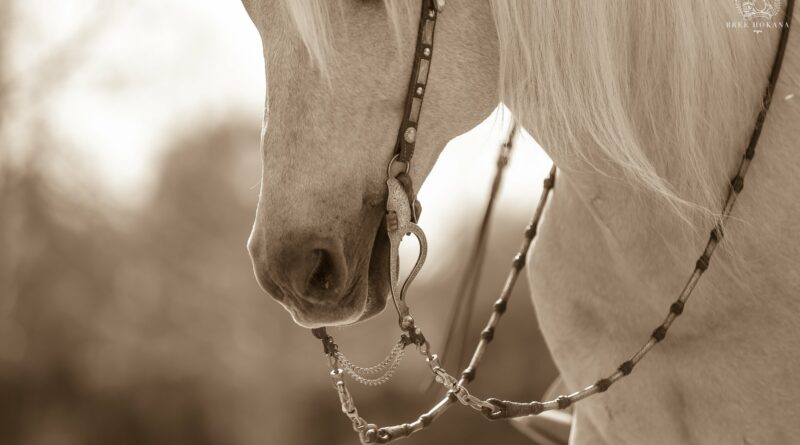Professional Dana Hokana Answers Your Questions: What is a Good Western Pleasure Bit?
I have been turned left and right about bits… this one does this or this one does that… and I am just so unsure. So, could you help me out and tell me what you think is a proper bit for a western pleasure class for a 7 year old full bred Morgan? I have not taken him off of the snaffle bit yet. I want a bit that obviously has control and is higher than the snaffle but not too harsh.
Trina
A: Hi Trina,
The question of what bit that you should use on your seven-year-old Morgan is a good question. The right answer is based on a lot of factors. Every horse is an individual, and has a different sensitivity level. Also, the interior of every horses mouth is shaped differently, their tongues vary from horse to horse. The rider or trainers hands may play a part. If the rider is passive in their hands or weak, they may feel that they need more bridle. A sharp-handed rider may have a horse afraid or too reactive and may need a milder bit. Plus, most people have their opinion about this subject, as you have seen! I will give you my opinion and explain my thought process behind it.
I never use a lot of bridle or a tough bridle to intimidate my horse. Most every time I see people do that, it backfires. The horse tells on you with his body language, in other words. They may over-bridle or “hide” out of intimidation, or they may mouth the bit, or toss or throw their head in resistance. A horse needs to obey and give to pressure, but a rider’s best bet is to be fair and reasonable as to the pressure given. I value my communication between my hands and the horse’s mouth, and the bit is a tool that allows me to connect with my hands. When a person uses a tough bit, the signal becomes much more intense, depending upon the size and severity of the bit. If I am using too much bit my signal may be perceived as so loud, that the signal overpowers the original cue and it is lost. Using a really mild bit that the horse just doesn’t listen to can teach the horse to resist or ignore the riders cue.
I like a bit that allows me to take hold of my horses mouth and use my legs to round up or collect my horse in any position that I want. When too much bridle is given, and the horse hides or gets behind the bridle, it is very hard to be able to push the horse’s legs and do exercises to maintain their best movement. I want to be able to bridle, bump, pull and collect my horse without them hiding. I want them to know that its part of the everyday workout. No big deal! I also want them to soften and give to my pressure.
In our western pleasure classes we are judged on the profile of the horse. So a horse that is over-bridled and has an arched neck is not as attractive as a horse that is relaxed in the head, neck and poll. If I have a short to medium shank on my bit it allows the horse to relax and stretch their neck out. A long shank bit has a faster signal time from the rider’s hands to the horses face. A high port bit has a harder signal to the horse. I ride and start a lot of my green bridle horses in a short shank correction bit. I also show some of my pleasure and all around horses in a short shank loose cheek solid mouthpiece bit. I have others I show in a medium shank, medium port bit. I have a good variety of bits and I vary them depending upon the horse and their responsiveness that day. I love a good handmade bit and have some of my favorites.
I have a series of DVD’s that will really help to explain all of this and will also teach you the correct way to put your horse in the bridle. It also explains how bits and bridles work, it is called Take Control 5, 6 and 7. I hope that this helps you!



Hi I just bought a new horse for western pleasure and she uses a SS sweet iron mouth wonder gag bit can I use this in western pleasure??
Jorden